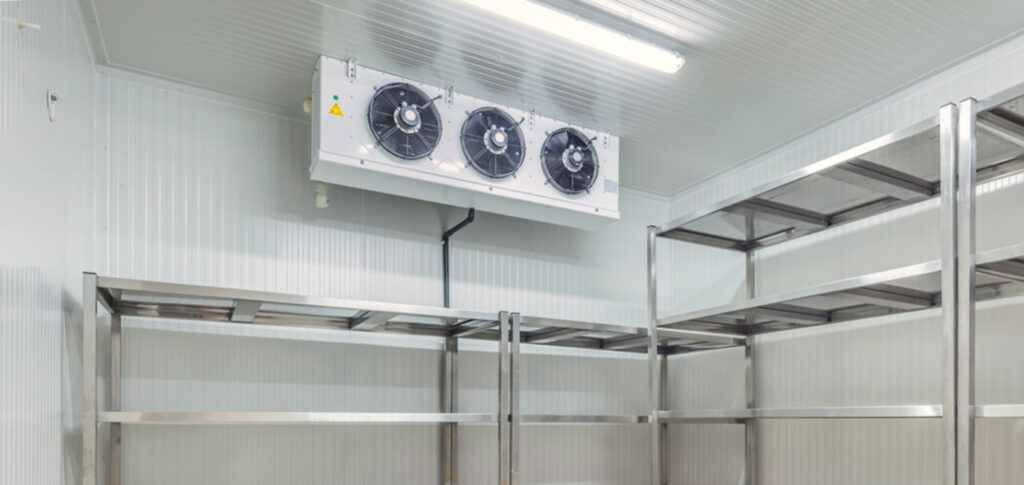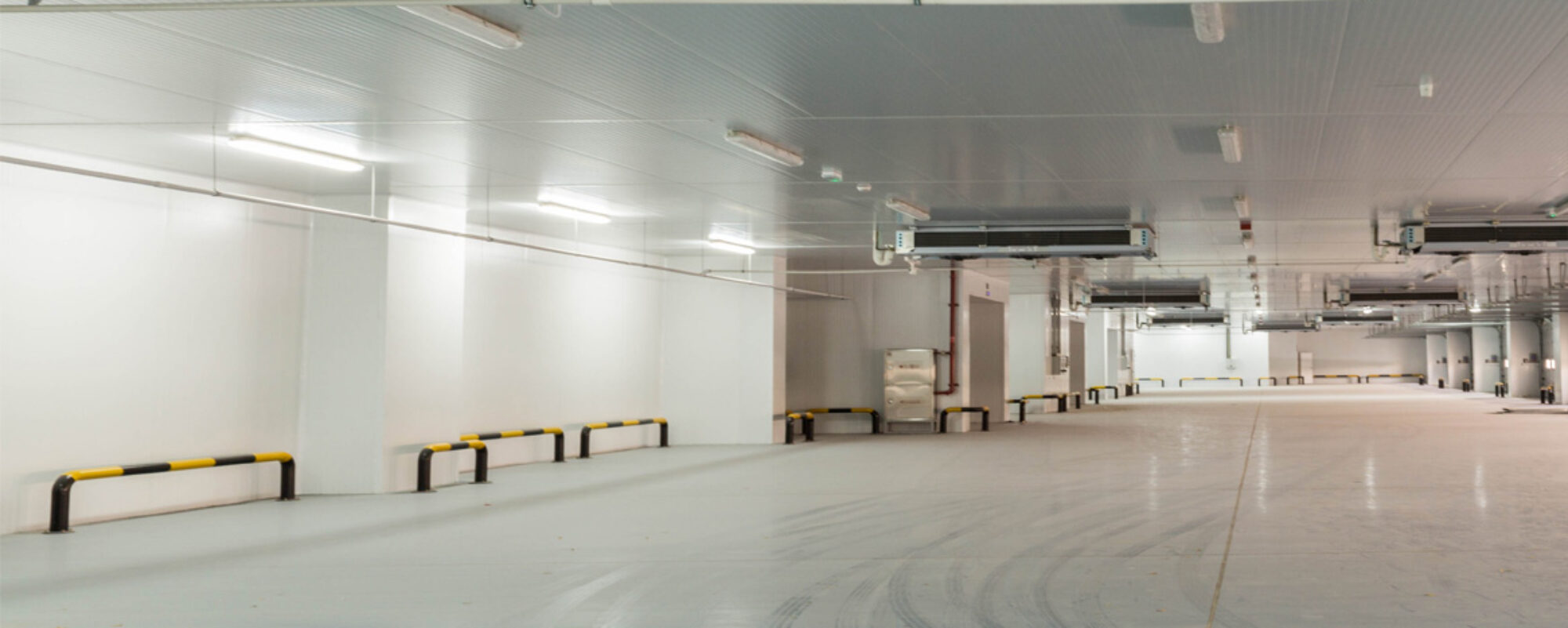I. Introduction: Cold Storage Project Cost in Bangladesh
Setting the Stage: The Vital Role of Cold Storage in Agricultural Preservation
In the sprawling fields and bustling markets of Bangladesh, the preservation of agricultural produce stands as a cornerstone of economic stability and food security. At the heart of this endeavor lies the cold storage industry, a silent yet indispensable guardian of perishable goods.
In a nation where agricultural abundance meets the challenge of post-harvest losses, cold storage emerges as a beacon of hope. It offers a sanctuary where fruits, vegetables, and other perishables find refuge from the relentless march of time. From potatoes to pineapples, the cold storage infrastructure plays a pivotal role in extending the shelf life of produce, ensuring its availability long after the harvest season wanes.
Introducing the Complex Dynamics of Cold Storage Investment in Bangladesh
However, beneath the surface of this vital industry lies a labyrinth of complex dynamics and intricate considerations. From investment feasibility to operational efficiency, the world of cold storage in Bangladesh is a tapestry woven with threads of innovation, necessity, and opportunity.
As stakeholders navigate this intricate landscape, they are confronted with a myriad of questions and challenges. How do we strike the delicate balance between capacity and demand? What factors influence the design and construction of a cold storage facility? How do we reconcile the imperatives of preservation with the realities of cost and scalability?
In the crucible of Bangladesh’s agricultural landscape, the quest for answers takes on a profound significance. It is a journey marked by resilience, ingenuity, and the unwavering commitment to harnessing technology and tradition in service of a common goal: ensuring that no grain, no fruit, and no vegetable is lost to the ravages of time.
II. Understanding the Cold Storage Project Cost
The Critical Factors: Capacity, Product Type, and Building Design
At the heart of the cold storage equation lies a triad of critical factors: capacity, product type, and building design. Each element plays a distinct yet interrelated role in shaping the contours of the cold storage landscape.
Capacity stands as the bedrock upon which the edifice of preservation is built. Whether it be 100 metric tons or 10,000 metric tons, the capacity of a cold storage facility dictates its scope, its scale, and its potential impact on the agricultural ecosystem.
Product type adds a layer of complexity to the equation, reflecting the diverse array of perishable goods that find their way into cold storage. From delicate fruits to hardy vegetables, each product type demands a tailored approach to preservation, from temperature control to humidity management.
Delving deeper, building design emerges as a linchpin in the Cold Storage Project Cost, marrying form with function in service of preservation. Whether it be steel structures or insulated chambers, the design choices reflect a delicate dance between tradition and innovation, efficiency and sustainability.
Delving into the Nuances of Potato Preservation as a Case Study
In the annals of agricultural preservation, few crops loom as large as the humble potato. A staple of diets and economies around the world, the potato serves as a poignant case study in the art and science of cold storage.
From the verdant fields of rural Bangladesh to the bustling markets of Dhaka, the journey of the potato is fraught with challenges and opportunities. It is a journey marked by the imperative of preservation, the imperative of ensuring that each tuber retains its flavor, its freshness, and its nutritional value.
As stakeholders grapple with the nuances of potato preservation, they confront a host of considerations, from temperature thresholds to storage durations. Yet, amidst the complexities and uncertainties, one truth remains clear: the cold storage industry stands as a bulwark against the vagaries of time, a testament to human ingenuity in the face of nature’s relentless march.
In the crucible of Bangladesh’s agricultural landscape, the quest for sustainable solutions takes on a renewed urgency. It is a journey defined by collaboration, innovation, and the unwavering commitment to ensuring that the bounty of the harvest endures long after the fields lie fallow.
In the subsequent sections, we will unravel the intricacies of cold storage investment, exploring the costs, challenges, and opportunities that shape this vital industry.
Stay tuned as we embark on a journey into the heart of Bangladesh’s cold storage landscape, where tradition meets technology, and preservation meets possibility.
III. Breaking Down the Costs
A. Capacity Considerations: Exploring the Importance of Sizing in Cold Storage Ventures
In the intricate world of cold storage, size isn’t just a number; it’s the cornerstone of efficiency and efficacy. The capacity of a cold storage facility dictates its ability to accommodate and preserve perishable goods. In Bangladesh, where agricultural produce like potatoes are abundant, sizing becomes paramount.
A thorough assessment of capacity involves not only the volume of produce but also factors like circulation space, stacking configurations, and accessibility. A well-calibrated capacity ensures optimal utilization of resources while minimizing wastage—a delicate balance crucial for sustainable operations.
B. Building the Foundation: The Significance of a Solid Structure
At the heart of every cold storage facility lies its structural integrity—a robust foundation upon which the edifice stands tall. In Bangladesh, single-story steel buildings have emerged as the preferred choice for their durability, flexibility, and cost-effectiveness.
These structures offer a blend of strength and adaptability, capable of withstanding the rigors of time and climate. From monsoon rains to sweltering summers, the resilience of steel ensures uninterrupted protection for the precious cargo within.
C. Insulating the Investment: Unveiling the Invisible Armor
Insulation serves as the unsung hero in the realm of cold storage, shielding perishables from the relentless assault of temperature fluctuations. In Bangladesh’s tropical climate, where heat and humidity reign supreme, insulation emerges as a preservative shield—a bulwark against spoilage and decay.
Whether it’s foam panels, spray foam, or rigid boards, the choice of insulation reflects a commitment to quality and precision. By creating a controlled environment within the storage facility, insulation preserves the freshness and nutritional value of the stored produce.
D. Machinery & Equipment: The Backbone of Efficiency
Behind every successful cold storage operation lies an array of machinery and equipment—the silent engines that power preservation. From refrigeration units to conveyor belts, these tools are the unsung heroes, orchestrating a symphony of efficiency and precision.
In Bangladesh, where the demands of agriculture are relentless, investing in state-of-the-art equipment is not just a choice; it’s a necessity. The seamless integration of technology streamlines operations, minimizes downtime, and maximizes throughput—a testament to the power of innovation in agricultural preservation.

IV. Crunching the Numbers
Total Cost Breakdown for a 1000 Metric Ton Cold Store
- Building Cost: 85,00,000 BDT
- Insulation Cost: 90,00,000 BDT
- Machinery & Equipment: 1,65,00,000 BDT
- Total: 3,40,00,000 BDT
For a cold storage facility with a capacity of 1000 metric tons, the total cost amounts to 3,40,00,000 BDT. This comprehensive figure encapsulates the investment required to safeguard agricultural produce and uphold the standards of quality and freshness.
Scaling Up: Exploring the Implications of a 5000 Metric Ton Capacity
The allure of expansion beckons, prompting stakeholders to contemplate the implications of scaling up operations. A 5000 metric ton capacity represents not just growth but a seismic shift in scope and ambition.
Multiplying the costs by five, the investment for a facility of this magnitude soars to 17 crore BDT—an investment that underscores the magnitude of opportunity and the weight of responsibility in the realm of agricultural preservation.
As stakeholders navigate the intricacies of expansion, they must tread cautiously, balancing ambition with pragmatism, and vision with viability. In the dynamic landscape of cold storage, scalability is not just a pursuit; it’s a testament to the indomitable spirit of progress.
V. Embracing the Fluidity of Financial Realities
In the world of cold storage investments, acknowledging the ever-changing financial landscape is paramount. This section delves into the dynamic nature of Cold Storage Project Cost, reflecting on the impact of time and market dynamics.
Understanding the Ever-Changing Landscape of Cold Storage Costs
Cold Storage Project Cost are not static figures etched in stone; rather, they fluctuate in response to numerous factors. Economic shifts, technological advancements, and regulatory changes all influence the financial realities of establishing and maintaining cold storage facilities.
As industries evolve and demands shift, so too do the costs associated with cold storage infrastructure. What was financially feasible yesterday may require reassessment tomorrow. Therefore, stakeholders must remain vigilant, continuously monitoring market trends and adapting their strategies accordingly.
Reflecting on the Impact of Time and Market Dynamics
Time is a relentless force that shapes the contours of the cold storage landscape. The cost calculations made in 2020 may serve as a baseline, but they do not exist in isolation. As years pass, inflation, labor costs, and material prices all exert their influence, reshaping the financial calculus of cold storage investments.
Moreover, market dynamics play a pivotal role in determining the viability of cold storage ventures. Fluctuations in supply and demand, shifts in consumer preferences, and geopolitical events can all ripple through the market, altering the cost dynamics of cold storage projects.
VI. Conclusion: Cold Storage Project Cost
As the journey through the cold storage landscape draws to a close. Who does not know, It becomes evident that investing in cold storage is more than a financial endeavor—it’s an opportunity to safeguard agricultural produce and foster economic growth. This section encapsulates the essence of the discussion, summarizing the key takeaways and underscoring the importance of strategic planning and dedication in agricultural preservation.
Summarizing the Journey: From Investment to Opportunity in Cold Storage
In retrospect, the exploration of cold storage costs has illuminated the intricate interplay between investment and opportunity. From building robust infrastructure to insulating investments against market volatility, every step in the cold storage journey carries profound implications for agricultural preservation and economic development.
Emphasizing the Significance of Strategic Planning and Dedication in Agricultural Preservation
At its core, successful cold storage ventures hinge on strategic foresight and unwavering dedication. In a landscape fraught with uncertainty, stakeholders must chart their course with purpose and vision. Leveraging insights gleaned from market analysis and embracing innovative solutions to meet evolving demands.
VII. Call to Action
As the curtain falls on this exploration of cold storage economics, a call to action resonates. A call for stakeholders to navigate the cold storage terrain with purpose and vision. In an era defined by change and opportunity, the preservation of agricultural produce stands as both a challenge and a promise. Let us heed the call, embracing the fluidity of financial realities and charting a course toward a future. Where cold storage serves as a cornerstone of agricultural sustainability and economic prosperity.
This detailed reflection encapsulates the nuanced understanding of cold storage investments and underscores the imperative for stakeholders. Those engage with purpose and vision.

